
An invasion of Red Admirals
April 17th, 2012
They're everywhere right now!
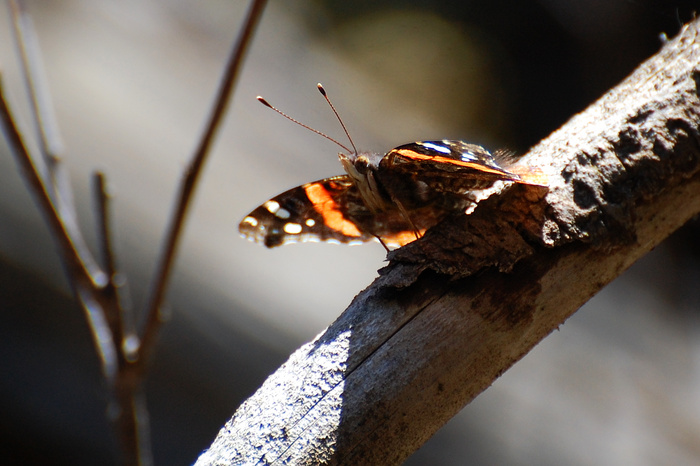
1680x1050 wallpaper
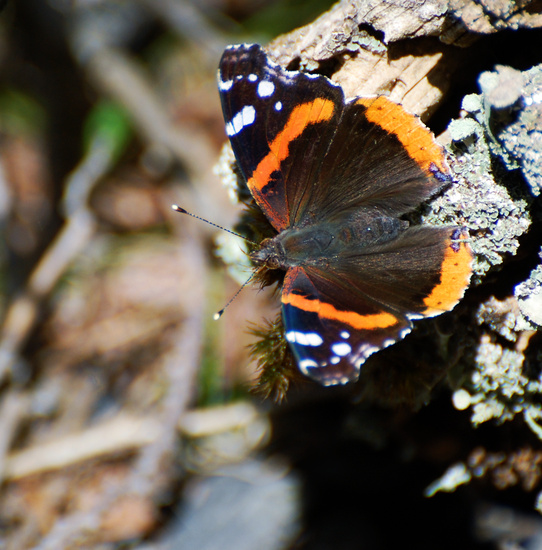
1680x1050 wallpaper
Birds Of Dutch Gap
January 31st, 2012
The Dutch Gap marshes were, as usual, teeming with wintering waterfowl. None came close enough for artistic photos, but I wanted to take one just to show the variety. Here it is. A sharp-eyed birder should be able to pick out six different species in this picture. (Three more--Northern Pintail, American Wigeon and Wood Duck--were too far away to get in the frame.)
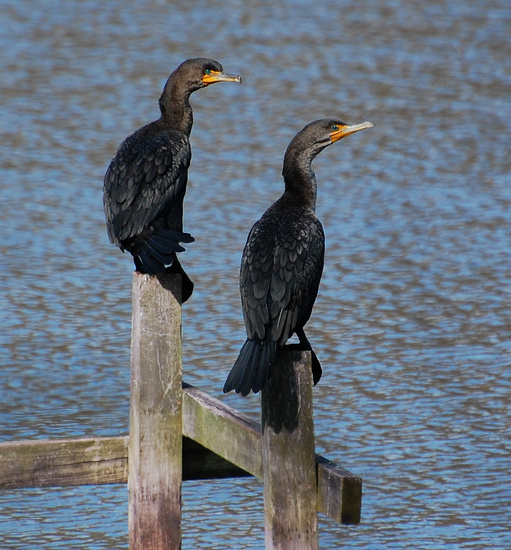
1680x1050 wallpaper
A pair of Double-Crested Cormorants loafing over the James River. I liked getting the chance to capture their deep blue-green eyes.

Hermit Thrush
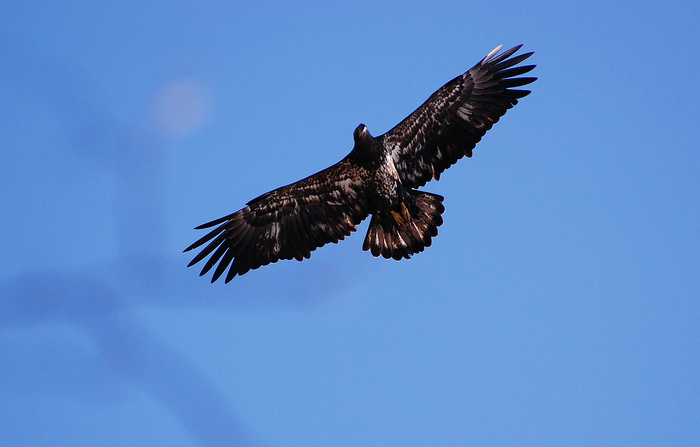
1680x1050 wallpaper
This juvenile Bald Eagle circled directly over me several times before flying away. It almost seemed like he was trying to decide if I was small enough to carry off and eat! Bald Eagles look more or less like this for four years before they acquire their famous all-white head and tail.
Virginia backyard birds
January 27th, 2012
For this post I owe thanks to my aunt Alice. Her house is surrounded by woods, and she maintains a diversity of feeders in her front and back yards: sunflower, nyjer, mixed seed, multiple suet blocks. I got some of my best photos of the trip just staking out on her back porch.
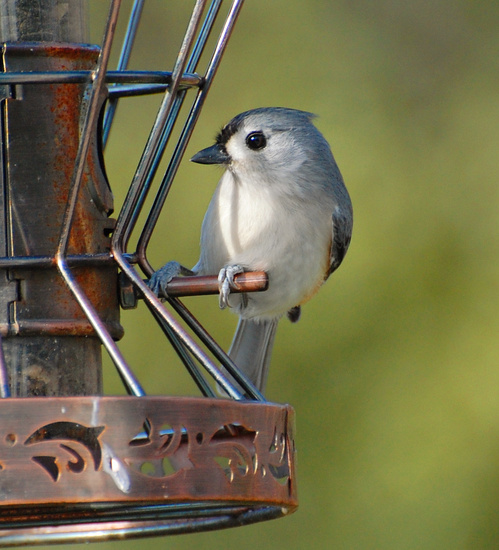
1680x1050 wallpaper
Tufted Titmouse: the bird that makes everyone go "d'awww!"
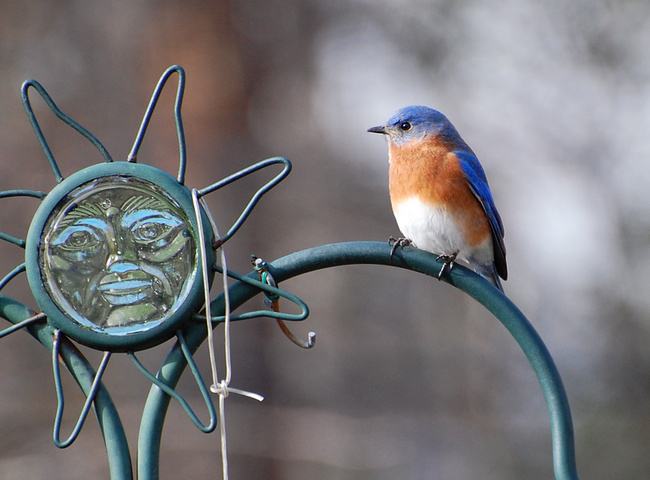
My first-ever decent shot of a male Eastern Bluebird. The species is often quite shy.
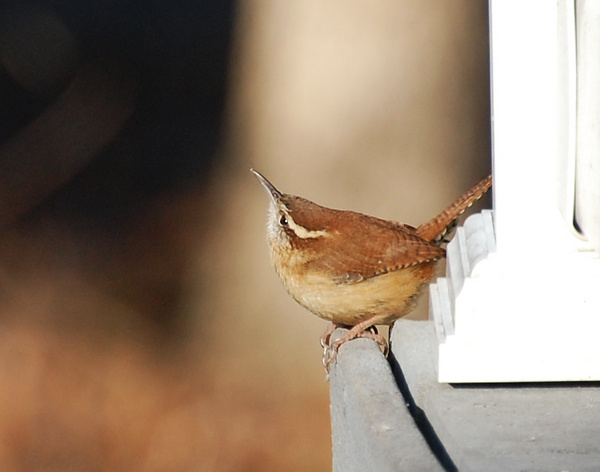
Carolina Wren
We were sitting in the living room talking when a Red-Bellied Woodpecker came to the suet block hanging just outside the window. I crept up to the glass to photograph him. Feeders are one of the best places to see this species up close. In their natural habitat they usually stay high up in the trees.

The Red-Shouldered Hawks of Deerfield
January 25th, 2012
For the third year in a row, I've found a pair of Red-Shouldered Hawks wintering in a particular spot in my parents' neighborhood. The locals are even familiar with them now, asking me if I'm looking for "the hawks" when I walk by with my binoculars. This time I was able to get good photos of one of them.

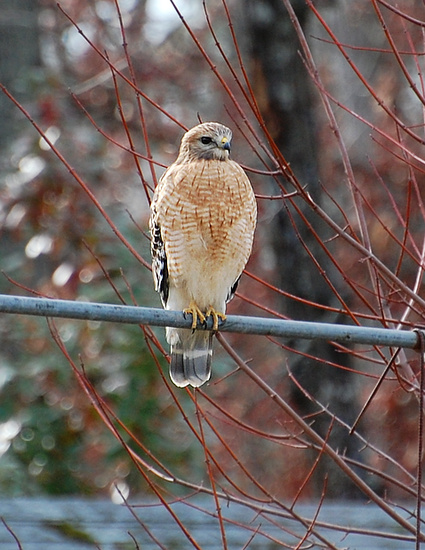
They seem to be filling the niche typically filled by accipiters (Sharp-Shinned and Cooper's Hawks) in Ottawa: namely, preying on suburban backyard birds. The one pictured was taking the rather cheeky approach of perching directly above a feeder.

1680x1050 wallpaper
The classic watchful pose of the Northern Mockingbird. As it happens, this bird was in the same yard as the hawk, so he had good reason to be watchful!
Cape Hatteras in winter
January 21st, 2012
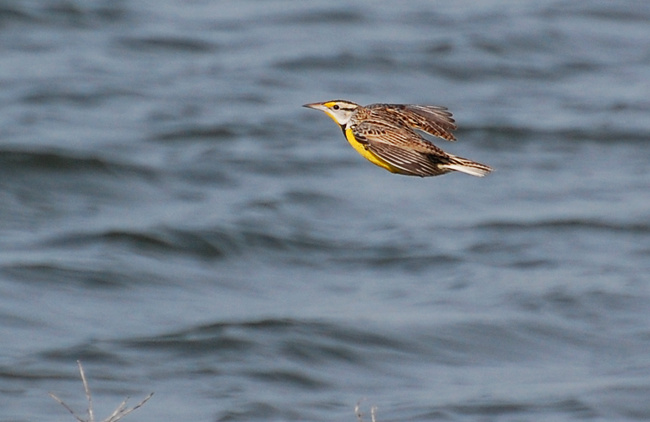
In winter, when most of the bright yellow birds have flown to the tropics, and goldfinches have molted most of their yellow for dingy greyish-green, what a sight to see a meadowlark, as golden-breasted as ever! These birds, generally thought of as a rural species, occur year-round at Pea Island Wildlife Refuge. In summer I hear them singing from the boardwalk.
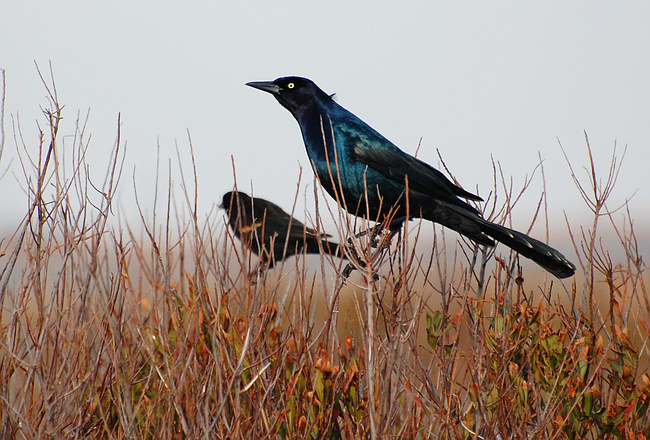
1680x1050 wallpaper
The Boat-Tailed Grackle, a supersize relative of the Common Grackle, is one of the characteristic birds of the south Atlantic coast. In winter they get very flocky, gathering on lawns, rooftops, sand dunes, and last but not least, feeders. A large group was patronizing the feeders at the Visitor Center, though they flushed into the vegetation as soon as I drew near.
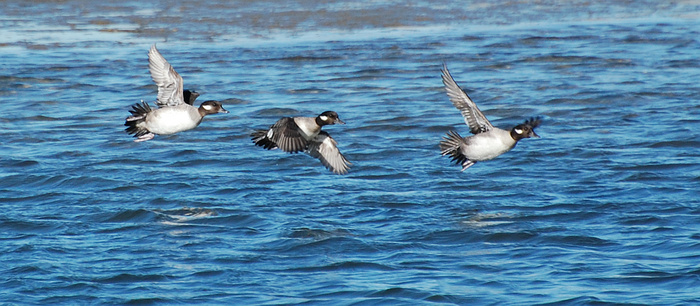
The dominant wintering duck at Pea Island appears to be the Northern Pintail---they raft by the hundreds on open water. They're skittish when approached, though, so I wasn't able to get any good pictures of them. These female Buffleheads were somewhat more cooperative.
( More photos within )
Virginia/Hatteras Triplist
January 19th, 2012
I'm back from vacation in Virginia and Cape Hatteras.
( The triplist is, um, epic. )
Photos to come!
Port In A Storm
January 1st, 2012
Northern Cardinal and female House Finch at my feeder on a blustery, wintry day.

Blue Jay
December 13th, 2011
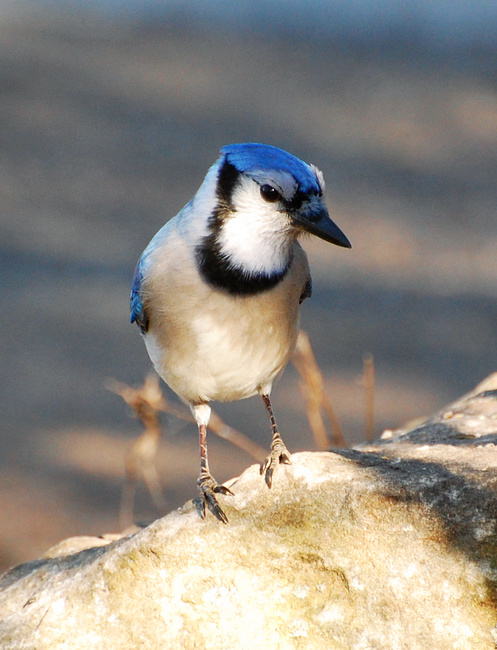
1680x1050 wallpaper
It's been a great year for winterlisting so far, with our mild weather encouraging many fall migrants to linger into December. I scooped up 29 species on the first plus six more last week, the most surprising being some lingering American Wigeons at Mud Lake, and several Red-Winged Blackbirds at the Hilda Road feeders.
I'm also enjoying the sunflower feeder I hung from our second-floor balcony--one of the pleasures of having a house instead of an 11th-floor apartment! So far the mainstay is chickadees and House Finches, but I've also seen a few cardinals and, on one occasion, goldfinches. It will be interesting to see how much business it gets after winter really sets in.
Field Birds
November 24th, 2011
Yesterday I went out with my birding group and found two long-awaited lifers!
The first was Snow Bunting, an arctic songbird. They breed on open tundra, and winter in rural areas and on shorelines. I'm a little embarrassed that it took me so long to list Snow Bunting. It's common here, late fall through early spring. I can only blame it on my dearth of experience with rural birding, plus a dash of bad luck.
Yesterday made up for it in spades. I fell in love with Snow Buntings. Big flocks of them swirling over the fields, twinkling salt-and-pepper swarms of birds. In flight, they're obvious. But when, all as one, they settle down in a snowy plowed field...they utterly disappear. Their brown and white winter plumage is a perfect match to the brown and white landscape. Your only hope is to see movement. When they skitter around en masse in a field, it looks like the earth itself is moving.
Lifer #2 was Sandhill Crane. Did you know we have cranes in Ottawa? I didn't, before I took up this hobby. I thought of cranes as exotic, Asian birds. There are two species native to North America, the highly-endangered Whooping Crane, and the more numerous Sandhill Crane, a large, stately grey bird with a red forehead. Not to be confused with herons, which are easily seen in just about any stream, river or pond around Ottawa, our population of Sandhill Cranes is very small and reclusive, breeding in only one known location: Mer Bleue bog.
Autumn is the time to see them. That's when they leave the bog and gather in adjacent farmer's fields to feed on waste grain. The sight is a magnet to migrating Sandhill Cranes, who then touch down and swell the flock. At Milton and Smith roads, we found 95 of them in one field. Too far away for decent photographs, but with a spotting scope, we were able to have a good, close-up look.
Lifelist now stands at 299. The next one is the big one!
More Autumn Waterfowl
November 14th, 2011
In the past few autumns, a whole flock of migrant Lesser Scaup have taken to staging in one of the small, manmade ponds at Andrew Haydon Park. It's fun to get to see these very wild ducks up close. Over time they become tame, perhaps taking their cue from the surrounding Mallards, who evince no alarm at passing humans (but do react to passing dogs.) Last time I was there, a couple of them even came up on shore, the first time I'd ever seen scaup on land.
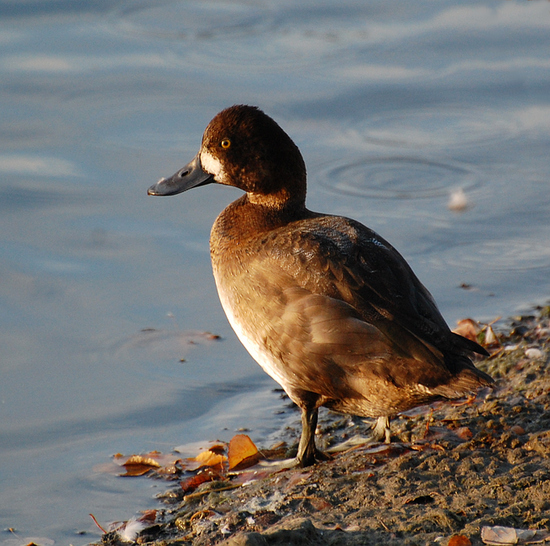

(female Mallard behind)
Alas, Lesser Scaup drakes wear their eclipse plumage late in the year, and by the time they're fully back in their handsome breeding plumage, they'll be gone to their wintering grounds. The photos above are both of drakes, though, being in eclipse, they resemble females. You can just see a few vague whitish patches on the back and flanks where the breeding plumage is coming back in.
Two Brant have been feeding on the park lawn for the last couple weeks. This small (duck-sized) tundra goose is a close relative to our familiar Canada Goose. It's not usually seen on manicured parkland (preferring to eat aquatic plants like eelgrass), but, like the scaup, these two seem to be taking cues from their more domesticated relatives.
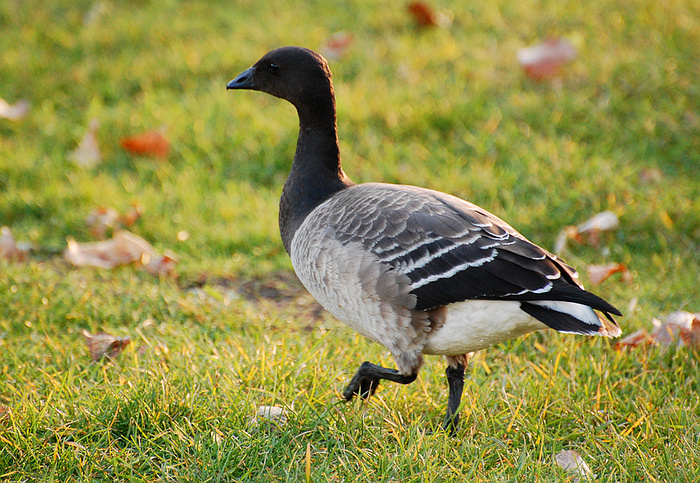
1680x1050 wallpaper
Whole flocks of this species sometimes put down to rest on the Ottawa River during their fall migration.
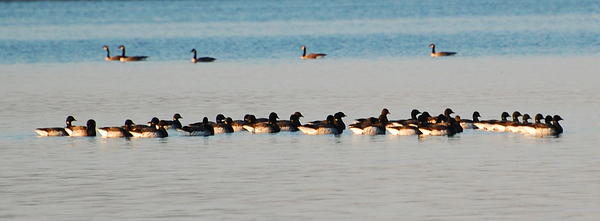
(Canada Geese behind)
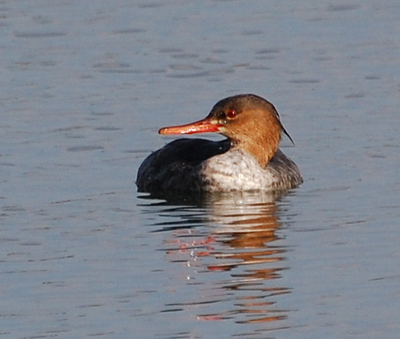
This looks like a female Common Merganser--a common breeder in our area--at first glance. But its bright red eyes give it away as something more interesting: a Red-Breasted Merganser. See here for a look at the drake's unique, spiky-haired breeding plumage.
|
